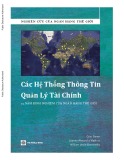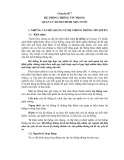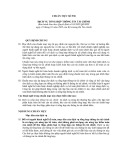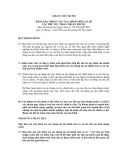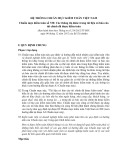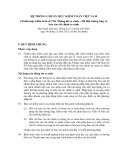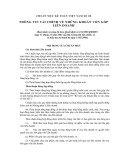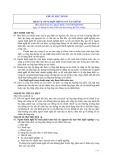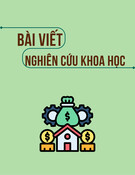
CHAPTER 2
THE INTERNATIONAL MONETARY
SYSTEM
Chapter Objectives:
1. Evolution of the International Monetary
System
2. International institutions systems
3. International financial adjustment
Chapter Objectives:
1. Evolution of the International Monetary
System
2. International institutions systems
3. International financial adjustment
12/19/2010 1
B02013 - The international Monetary
system

1. Evolution of the International Monetary
System
• Bimetallism: Before 1875
• Classical Gold Standard: 1875-1914
• Interwar Period: 1915-1944
• Bretton Woods System: 1945-1972
• The Flexible Exchange Rate Regime: 1973-
Present
• Bimetallism: Before 1875
• Classical Gold Standard: 1875-1914
• Interwar Period: 1915-1944
• Bretton Woods System: 1945-1972
• The Flexible Exchange Rate Regime: 1973-
Present
12/19/2010 2
B02013 - The international Monetary
system

1.1. Bimetallism: Before 1875
• A “double standard” in the sense that both gold
and silver were used as money.
• Both gold and silver were used as international
means of payment and the exchange rates
among currencies were determined by either
their gold or silver contents.
• A “double standard” in the sense that both gold
and silver were used as money.
• Both gold and silver were used as international
means of payment and the exchange rates
among currencies were determined by either
their gold or silver contents.
12/19/2010 3
B02013 - The international Monetary
system

1.2. Classical Gold Standard: 1875-1914
• During this period in most major countries.
• The exchange rate between two country’s
currencies would be determined by their relative
gold contents.
• During this period in most major countries.
• The exchange rate between two country’s
currencies would be determined by their relative
gold contents.
12/19/2010 4
B02013 - The international Monetary
system

1.3. Interwar Period: 1915-1944
• Exchange rates fluctuated as countries widely
used “predatory” depreciations of their
currencies as a means of gaining advantage in
the world export market.
12/19/2010 5
B02013 - The international Monetary
system



